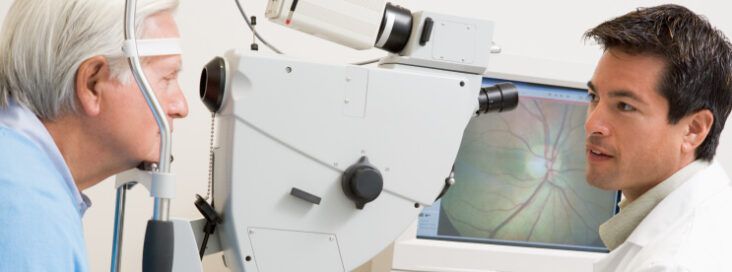There are many different eye conditions and diseases that can affect vision and the health of the eyes. Depending on what these conditions are, there can be noticeable changes in vision and eye health. For other conditions, there are sometimes no tell tale signs that problems may be arising. Glaucoma, is one such eye condition which generally has no signs or symptoms. Unless detected while in the early stages through an eye exam, glaucoma can cause irreversible damage to the eyes, which often results in vision loss.
What Is Glaucoma?
There are many things that can go wrong with our eyes. Many different eye conditions and diseases can affect vision. Glaucoma, is one of these vision threatening diseases. And when left undiagnosed and untreated, it can lead to blindness. In Canada, it affects more then 400000 people and globally affects 67 million. Glaucoma results because of an increase in pressure within the eye. Over time, this elevation in eye pressure can cause damage to the optic nerve in the back of the eye. Vision is relayed through a nerve pathway called the optic nerve.

Why Do People Get It?
People can develop glaucoma for different reasons. Often, it occurs because it is a hereditary condition. If you have a history of glaucoma in your family, it is recommended that you have your eyes checked regularly. It can also occur as a result of a dramatic eye injury or infection.
How It Is Diagnosed
Your optometrist can screen you for glaucoma a couple of different ways. Wether you suffer from it or not, these tests are routinely performed on everyone over the age of 18. The most common of these test, is a check of the pressure inside the eyes. This is done with an instrument called a non-contact tonometer or “air puff” test.
Another way the doctor can check the pressure in your eyes, is with a contact tonometer. With this instrument, an anesthetic numbing drop is first placed into your eye. The instrument is then placed right up against the cornea to take the pressure measurement. Although both these methods may sound uncomfortable, they really are quick and painless. A pressure check, gives your doctor a good indication if you may be a glaucoma suspect.
The doctor can also assess wether or not you have high eye pressure, by viewing the shape of the optic nerve in the back of the eye. Often, the optic nerve looks different when under high eye pressure. Your doctor will also have you perform a visual fields test to see if there are any areas of vision damage and defects.
After assessing all of this information, your doctor can diagnose if you have glaucoma. The extent of damage that may have been done to the eyes can also be determined. Treatment options and recommendations can then be made.
Treatment
Many glaucoma sufferers treat their eye condition with drops. These prescription eye drops help reduce eye pressure by decreasing the amount of aqueous fluid that is produced within the eyes. Other treatments can also include different surgeries that also reduce eye pressure.
If left undiagnosed and untreated, glaucoma can rob you of your sight. By having regular eye examinations that screen for glaucoma, you can reduce the risk of glaucoma and other eye diseases and conditions from damaging your eye health and vision.
Article Written By: Trina Vanaalst

